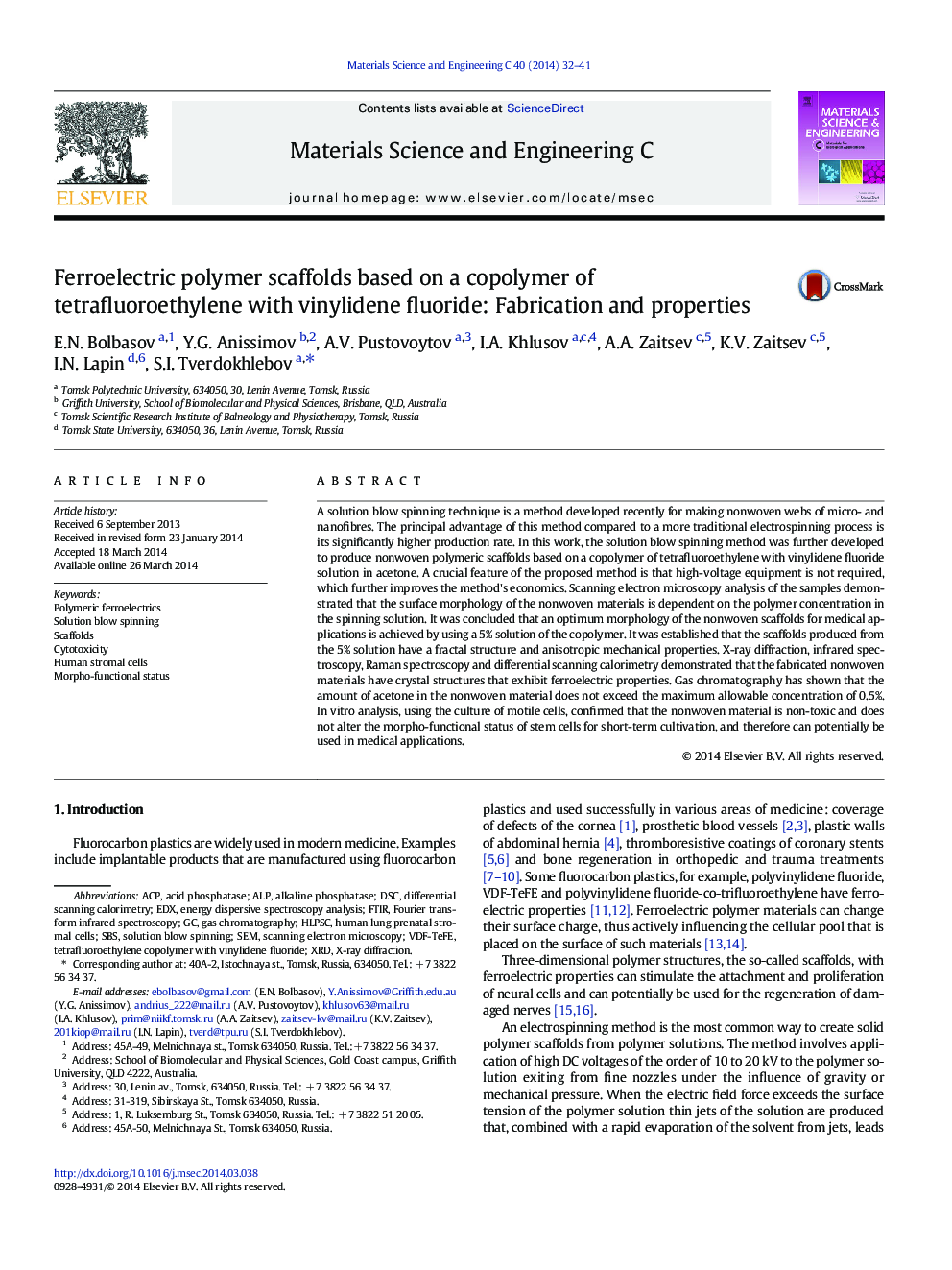| کد مقاله | کد نشریه | سال انتشار | مقاله انگلیسی | نسخه تمام متن |
|---|---|---|---|---|
| 1428312 | 1509181 | 2014 | 10 صفحه PDF | دانلود رایگان |
• Solution blow spinning was used to fabricate nonwoven material based on VDF-TeFE.
• The nonwoven material has complex spatial organization and high porosity.
• It was established that the nonwoven material exhibits ferroelectric properties.
• In vitro testing demonstrated that the material is non-toxic.
• The material does not affect cells' morpho-functional status in vitro.
A solution blow spinning technique is a method developed recently for making nonwoven webs of micro- and nanofibres. The principal advantage of this method compared to a more traditional electrospinning process is its significantly higher production rate. In this work, the solution blow spinning method was further developed to produce nonwoven polymeric scaffolds based on a copolymer of tetrafluoroethylene with vinylidene fluoride solution in acetone. A crucial feature of the proposed method is that high-voltage equipment is not required, which further improves the method's economics. Scanning electron microscopy analysis of the samples demonstrated that the surface morphology of the nonwoven materials is dependent on the polymer concentration in the spinning solution. It was concluded that an optimum morphology of the nonwoven scaffolds for medical applications is achieved by using a 5% solution of the copolymer. It was established that the scaffolds produced from the 5% solution have a fractal structure and anisotropic mechanical properties. X-ray diffraction, infrared spectroscopy, Raman spectroscopy and differential scanning calorimetry demonstrated that the fabricated nonwoven materials have crystal structures that exhibit ferroelectric properties. Gas chromatography has shown that the amount of acetone in the nonwoven material does not exceed the maximum allowable concentration of 0.5%. In vitro analysis, using the culture of motile cells, confirmed that the nonwoven material is non-toxic and does not alter the morpho-functional status of stem cells for short-term cultivation, and therefore can potentially be used in medical applications.
Figure optionsDownload as PowerPoint slide
Journal: Materials Science and Engineering: C - Volume 40, 1 July 2014, Pages 32–41
